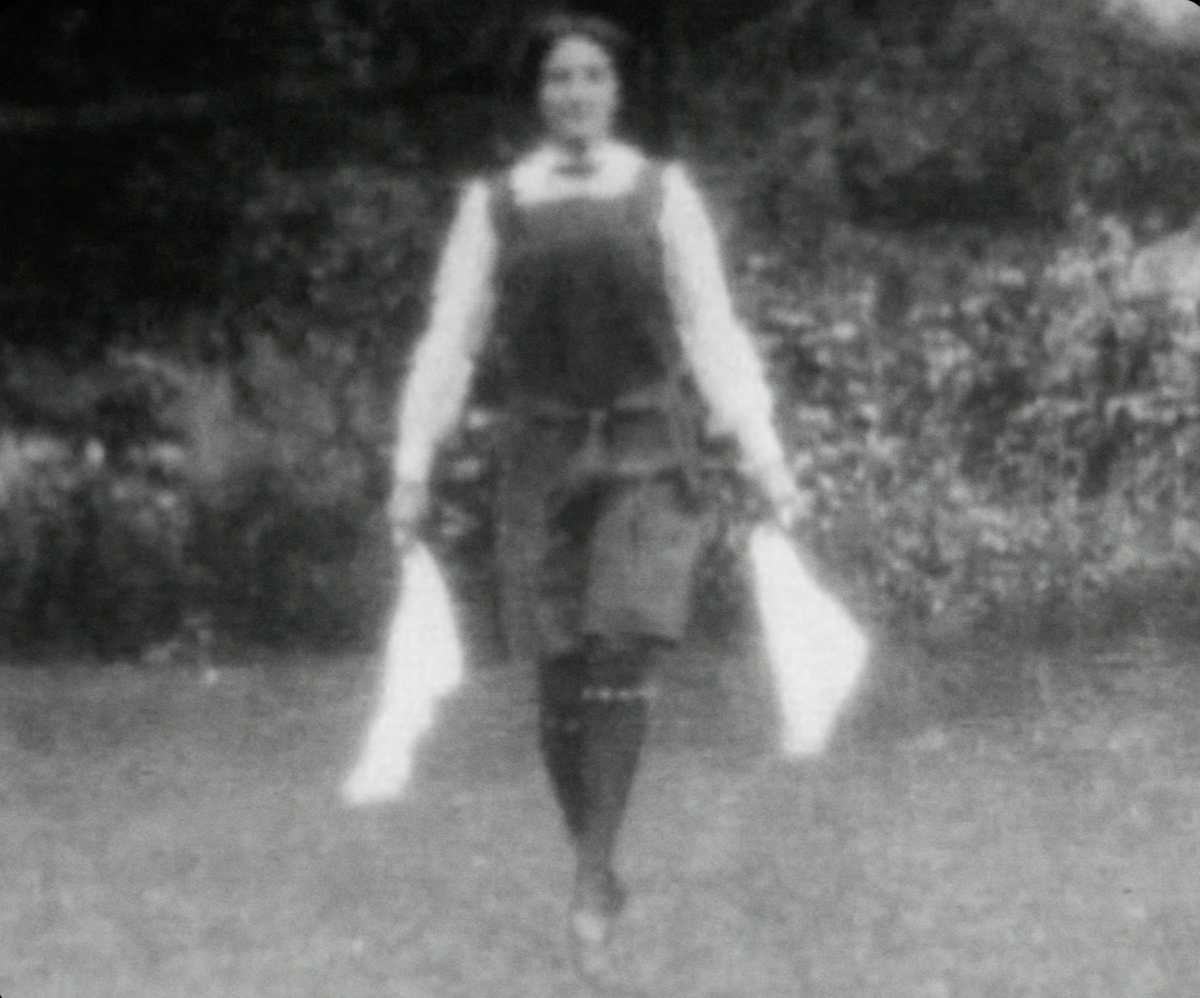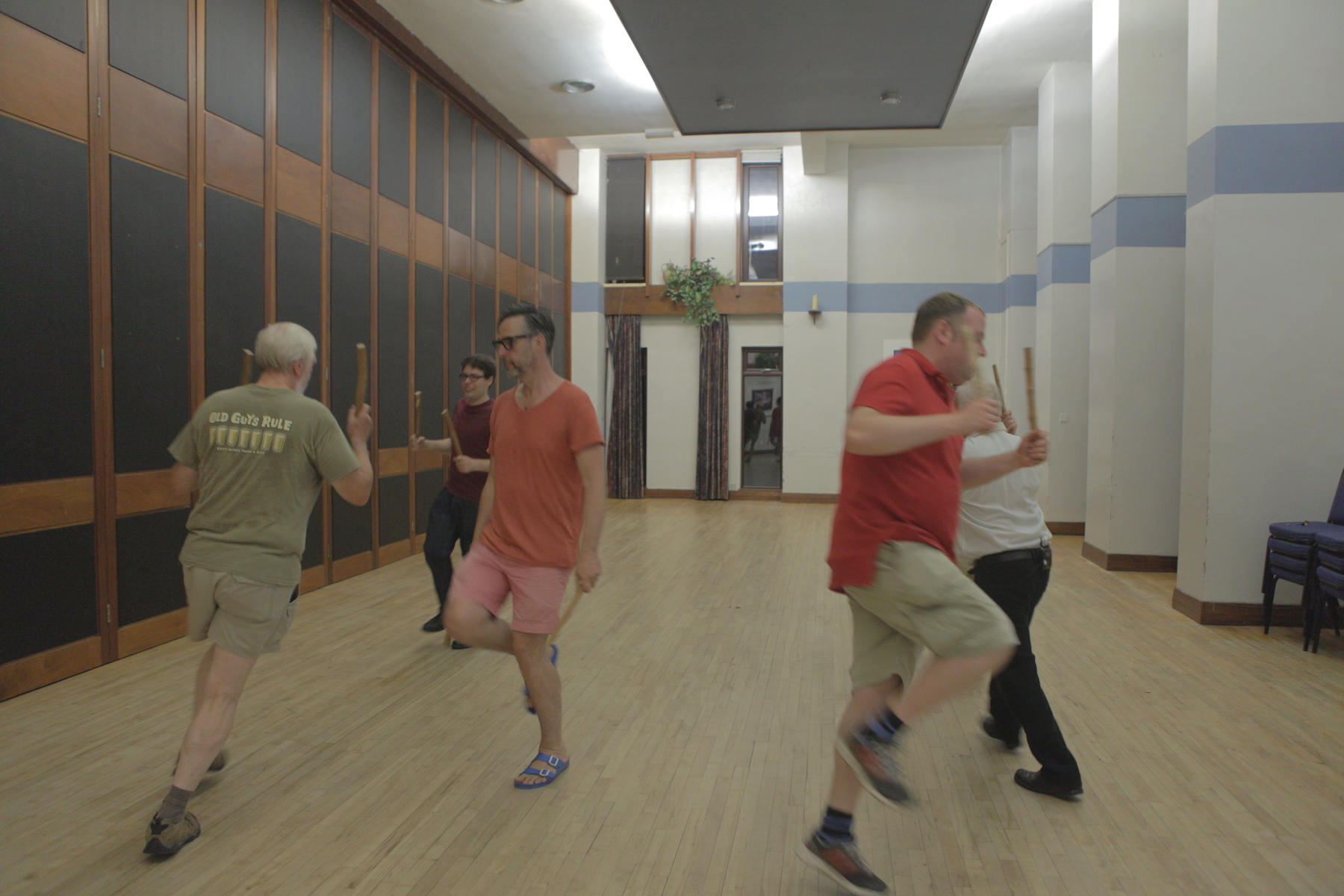For Folk's Sake: 'I owe my very existence to Morris dancing' | reviews, news & interviews
For Folk's Sake: 'I owe my very existence to Morris dancing'
For Folk's Sake: 'I owe my very existence to Morris dancing'
Richard Macer, who has made documentaries about Vogue and dyslexia, introduces his latest
Halfway through filming For Folk’s Sake, a documentary for BBC Four about Morris dancing, I received a package in the post that would dramatically change the course of the programme. It was from my mother.
All the women had bobbed hair and wore long white skirts and the men were, to all intents and purposes, in cricket whites. There was a tangible sense of gay abandon as if at any moment Gatsby might appear on the terrace. But there, among the throng, were two very young faces I found vaguely familiar, smiling and dancing, clutching hankies or some sticks and faded by time. It was my grandparents.
 Up until that moment in my life I had never felt much affinity for Morris dancing. If ever I had encountered Morris dancers in a village or shopping centre I’d never stop to watch or even slow down, I just kept on walking. Morris dancing was always something that belonged to a part of Englishness that I felt was incurably naff. But now as I read the accompanying letter from my mother a strange feeling came over me. My grandparents had met and fallen in love at a folk dancing event and that meant I owed my very existence to Morris dancing!
Up until that moment in my life I had never felt much affinity for Morris dancing. If ever I had encountered Morris dancers in a village or shopping centre I’d never stop to watch or even slow down, I just kept on walking. Morris dancing was always something that belonged to a part of Englishness that I felt was incurably naff. But now as I read the accompanying letter from my mother a strange feeling came over me. My grandparents had met and fallen in love at a folk dancing event and that meant I owed my very existence to Morris dancing!
For the three months prior to this I had been following the story of the oldest male-only Morris dancing organisation in the country, The Morris Ring. The Ring had taken the controversial decision to allow women to join as a way of stemming the tide of dwindling numbers that threatened its very existence. While making the film I had been invited to dance with my local team, the Manchester Morris Men where, at 51, I was the closest thing they had to a young raw talent. Little George was teaching me the dance Constant Billy and the plan was that I would perform it in public before the end of the season. He told me to practise at every opportunity, not just when I was with him during our one-to-one sessions or with the rest of the team on practice nights, but also at home while washing up after dinner or while brushing my teeth before bed and also while picking up the kids from school. My youngest son Harry put a stop to the latter as soon as he noticed his father coming through the school gate towards him, skipping. (Pictured below: Richard Macer practising)
For a while the producers and I discussed cutting a sequence similar to that in the first Rocky film where, in the course of a short montage, Sylvester Stallone’s character transforms from no-hoper to all-conquering hero. The problem is I can’t do one-armed press-ups and the rousing Rocky theme lost some of its impact when performed on a penny whistle. But even so, I put the hours in. And in October, when the sky was overcast and there was drizzle in the air, I made my debut outside a pub in Mossley at the foothills of the Pennines. No one was there to see it apart from a man with a dog and a woman who was smoking out of her bedroom window. But afterwards George and the men gave me a pewter tankard and I felt properly assimilated into that rarefied world of sticks and bells. By now I had begun to see what I had been blind to in the past: that beneath the paraphernalia of flowers and bells there is something quite beautiful about Morris dancing. It’s the way it unites a group of elderly taciturn men for the simple enjoyment of dance and celebration of life.
- For Folk's Sake: Morris Dancing and Me is on BBC Four at 9pm on Monday 1 April and then on the iPlayer
- More First Person Articles on theartsdesk
Explore topics
Share this article
The future of Arts Journalism
You can stop theartsdesk.com closing!
We urgently need financing to survive. Our fundraising drive has thus far raised £49,000 but we need to reach £100,000 or we will be forced to close. Please contribute here: https://gofund.me/c3f6033d
And if you can forward this information to anyone who might assist, we’d be grateful.

Subscribe to theartsdesk.com
Thank you for continuing to read our work on theartsdesk.com. For unlimited access to every article in its entirety, including our archive of more than 15,000 pieces, we're asking for £5 per month or £40 per year. We feel it's a very good deal, and hope you do too.
To take a subscription now simply click here.
And if you're looking for that extra gift for a friend or family member, why not treat them to a theartsdesk.com gift subscription?
more TV
 The Diplomat, Season 3, Netflix review - Ambassador Kate Wyler becomes America's Second Lady
Soapy transatlantic political drama keeps the Special Relationship alive
The Diplomat, Season 3, Netflix review - Ambassador Kate Wyler becomes America's Second Lady
Soapy transatlantic political drama keeps the Special Relationship alive
 The Perfect Neighbor, Netflix review - Florida found-footage documentary is a harrowing watch
Sundance winner chronicles a death that should have been prevented
The Perfect Neighbor, Netflix review - Florida found-footage documentary is a harrowing watch
Sundance winner chronicles a death that should have been prevented
 Murder Before Evensong, Acorn TV review - death comes to the picturesque village of Champton
The Rev Richard Coles's sleuthing cleric hits the screen
Murder Before Evensong, Acorn TV review - death comes to the picturesque village of Champton
The Rev Richard Coles's sleuthing cleric hits the screen
 Black Rabbit, Netflix review - grime and punishment in New York City
Jude Law and Jason Bateman tread the thin line between love and hate
Black Rabbit, Netflix review - grime and punishment in New York City
Jude Law and Jason Bateman tread the thin line between love and hate
 The Hack, ITV review - plodding anatomy of twin UK scandals
Jack Thorne's skill can't disguise the bagginess of his double-headed material
The Hack, ITV review - plodding anatomy of twin UK scandals
Jack Thorne's skill can't disguise the bagginess of his double-headed material
 Slow Horses, Series 5, Apple TV+ review - terror, trauma and impeccable comic timing
Jackson Lamb's band of MI5 misfits continues to fascinate and amuse
Slow Horses, Series 5, Apple TV+ review - terror, trauma and impeccable comic timing
Jackson Lamb's band of MI5 misfits continues to fascinate and amuse
 Coldwater, ITV1 review - horror and black comedy in the Highlands
Superb cast lights up David Ireland's cunning thriller
Coldwater, ITV1 review - horror and black comedy in the Highlands
Superb cast lights up David Ireland's cunning thriller
 Blu-ray: The Sweeney - Series One
Influential and entertaining 1970s police drama, handsomely restored
Blu-ray: The Sweeney - Series One
Influential and entertaining 1970s police drama, handsomely restored
 I Fought the Law, ITVX review - how an 800-year-old law was challenged and changed
Sheridan Smith's raw performance dominates ITV's new docudrama about injustice
I Fought the Law, ITVX review - how an 800-year-old law was challenged and changed
Sheridan Smith's raw performance dominates ITV's new docudrama about injustice
 The Paper, Sky Max review - a spinoff of the US Office worth waiting 20 years for
Perfectly judged recycling of the original's key elements, with a star turn at its heart
The Paper, Sky Max review - a spinoff of the US Office worth waiting 20 years for
Perfectly judged recycling of the original's key elements, with a star turn at its heart
 The Guest, BBC One review - be careful what you wish for
A terrific Eve Myles stars in addictive Welsh mystery
The Guest, BBC One review - be careful what you wish for
A terrific Eve Myles stars in addictive Welsh mystery
 theartsdesk Q&A: Suranne Jones on 'Hostage', power pants and politics
The star and producer talks about taking on the role of Prime Minister, wearing high heels and living in the public eye
theartsdesk Q&A: Suranne Jones on 'Hostage', power pants and politics
The star and producer talks about taking on the role of Prime Minister, wearing high heels and living in the public eye

Add comment